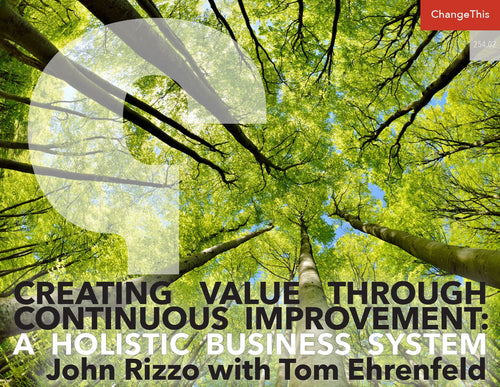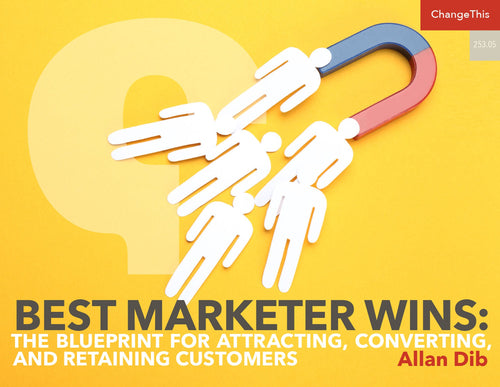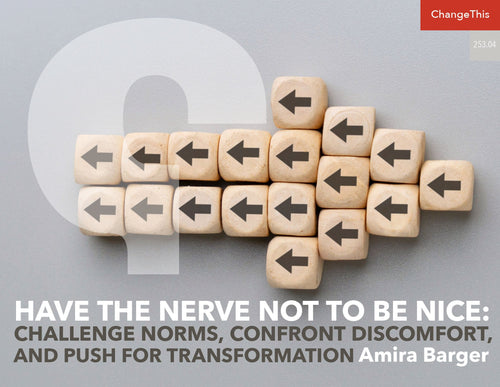It's Not Too Late: Transitioning to a Low-Carbon Economy
Not everything can go up forever. For a hundred years or more, we’ve been cutting, burning, tilling, and trashing our way to the future.
And now there’s no avoiding the truth of what’s happened. Each of us is becoming aware that, like it or not, change is here.
But the change can be for the better. It can create jobs, enhance careers, and give us a chance to focus on what we’ve overlooked. We can reconsider how we spend our days, the way we treat each other, and how we create a better world.
The change is here. It’s not too late. This is our moment to decide what to do with it.
To make informed decisions, we must understand how our economy has come to be so tied to fossil fuels and the ways in which we as individuals and organizations can begin to change the incentives to decarbonize the economy.
UNDERSTANDING CARBON LOCK-IN
The current global economy relies heavily on the use of fossil fuels. The inexpensive and convenient power they produce, the assets invested, and the expectation of stability make fossil fuels the basis of the world’s productivity.
Climate change offers a strong incentive to change the technologies we use to more climate-friendly ones. Yet governments all over the world have failed to implement policies to make the shift happen quickly. One reason for this is called carbon lock-in.
For 200 years, the world has industrialized. The steam engine enabled transport, which led to world trade, which led to increased demand, which created needs for insurance, investment markets, and more.
People depend on each layer of the economy for their livelihoods. Like a pyramid with a very large foundation, carbon has become the bedrock of most people’s income.
In the last century, the world’s population grew by billions of people. New jobs have been invented for most of these people. Technology has allowed them to be fed. Those jobs and that food have been based on an economy that has used carbon without regard for its real cost.
New needs arise as a society develops. Over the past century, human needs have developed from a secure food supply to the ability to travel, a steady energy supply, and recently, access to the internet. Competing technologies have emerged to satisfy these growing needs as well.
In a free-market economy, the companies providing these technologies have an interest in gaining a dominant market share. Dominant technologies in turn create new industries. This begins a cycle of lock-in:
- Other technologies are ignored as system standards and investment returns make it difficult for them to enter the existing system.
- Specialized companies form to investigate subsystems of the technology and optimize tiny parts of the system.
- The number of existing players with something to lose is far greater than the number of innovators who believe they will benefit from change.
- Specialized education emerges to provide experts to run the established system in the future.
- Specialized knowledge is built to improve productivity and enable interoperability.
- Institutions emerge in order to regulate the technology, which are then run or heavily influenced by members of the dominant economic and social classes, who are dependent on the status quo.
Dominant technologies rely heavily on the system they are built into. They provide a network effect and become more valuable with the number of people using them. A car is only valuable if there is a road to drive on. An electric car is worthless if there is no infrastructure provided to charge it.
The incremental cost for new people to use the technology goes down after the initial supporting infrastructure is built. Existing infrastructure makes technologies more affordable, which leads to more users. More users create the need for even more infrastructure. The more the technology is used, the more people become attached to the value and benefits it provides. So the cycle continues.
This is how we end up in a world fueled by carbon, facing an existential threat in the form of climate change, but seemingly unable to alter the underlying systems at play.
Sustainable technologies must overcome the initial hurdle of adoption and infrastructure in order to create the necessary change. Only then can they achieve lock-in to begin to reverse the underlying threat of climate change.
THE POSITIVE IMPACT OF SUSTAINABILITY ON INVESTOR RETURNS
A growing body of research shows that companies that proactively address climate change provide better investment returns to their shareholders. There is money to be made in sustainability.
Climate change is frequently viewed as the biggest risk faced by investors. Actions to cut emissions and avoid the worst impacts of climate change are now seen as the best path to protect long-term investment value and returns.
Investors concerned about climate impacts often use a company’s environmental, social, and governance (ESG) rating when making investment decisions. Companies committed to ESG initiatives (such as reducing carbon intensity, increasing renewable energy use, and recycling) are publishing measurable goals—and progress toward those goals—in periodic sustainability reports.
Increasingly, these reports are following the ESG standards established by the Global Reporting Initiative (GRI) and/or the United Nations Principles for Responsible Investment (PRI). The number of signatories has grown each year has ESG issues have received greater focus in the investment community.
ESG assets held by individual investors increased by 50 percent from 2018 to 2020, to $4.6 trillion from $3 trillion.
Global ESG assets are on track to exceed $53 trillion by 2025, representing more than one-third of the $140.5 trillion in projected total assets under management.
While Europe currently accounts for half of global ESG assets, the US may dominate the category starting in 2022. The next wave of growth could come from Asia, particularly Japan.
ESG–weighted investment portfolios are matching and sometimes exceeding the returns on traditional stocks indices.
As of November 29, 2021, investing in an ESG-weighted version of the S&P 500 would have provided a YTD return of 25.33 percent, three percent higher than the non-weighted S&P 500’s return of 22.33 percent.
THE ROLE OF FINANCE
Growing a business requires access to capital—and the more capital-intensive the business, the greater will be its need for financing.
Energy companies tend to be capital-intensive: The costs of drilling and operating an oil field or building wind farms and energy plants quickly add up.
Financiers focus on lending to firms that are likely to pay off their debts, and fossil fuel companies have traditionally been considered a safe bet. As such, the major fossil fuel companies have enjoyed easy access to capital, chiefly in the form of loans.
The largest banks have continued to finance fossil fuel companies since the 2015 Paris Accords. In fact, lending to those companies has continued to increase by about five percent per year—$824 billion in total in 2019, which was $43 billion more than in 2018. In total, Bloomberg estimates that fossil fuel companies have secured approximately $3.6 trillion worth of new loans since 2015. Banks have collected more than $16.5 billion in fees on the trillions lent to fossil fuel companies since 2015.
For alternative energy companies and projects to succeed, they, too, need access to capital. And although “green” debt issuance has grown substantially since 2015, it only amounts to one-third of fossil–fuel–related financing over the same period.
In 2021, green companies attracted more financing than fossil fuel companies for the first time. However, primarily due to COVID–related disruptions, they attracted less total financing than they did in 2020.
If post-2015 energy financing trends continue, it is unlikely the world will be able to transition away from fossil fuels quickly enough to meet the 1.5°C/2.7°F goal agreed upon at Paris.According to an analysis by the Rainforest Action Network, continuing current levels of investment will keep fossil fuels’ share of the global energy mix at over 75 percent in 2030. Yet, models by McKinsey & Company show that fossil fuels must provide no more than half the world’s energy by 2030—and none by 2050—to keep on track for less than 1.5°C/2.7°F of warming.
WHERE YOU BANK MAKES A DIFFERENCE THE ROLE OF FINANCE
Trillions of dollars make a difference. The deposits in checking and savings accounts support investments by commercial banks in the fossil fuel economy.
Specifically, about 95 percent of households in the United States have one or more checking or savings accounts in commercial banks. These 124,000,000 households have an average of more than $40,000 in their accounts, which means the banks are holding over $5 trillion of American consumers’ money. This is only in checking and savings accounts: Banks hold other financial assets of individuals and families as well.
Commercial banks invest money in three ways: making loans to businesses and individuals, buying securities either as individual stocks or funds, and simply holding money in places where it can earn interest at greater rates than it pays to depositors.
How banks decide to make those loans or investments is generally driven by the need to generate significant financial returns.
Commercial banking is increasingly concentrated in the hands of just a few institutions: About 45 percent of all deposits are in four banks: JP Morgan Chase, Citibank, Wells Fargo, and Bank of America.
Overall, from 2016-2019, the top 35 banks globally (including American banks) have invested over $2.7 trillion in fossil fuel companies. The top four alone invested $811 billion in the fossil fuel economy during this time. Banking support for fossil fuels has increased since the signing of the Paris Accords.
However, an increasing number of commercial banks of all sizes are establishing policies that limit fossil fuel investments and lay out a transition plan for the future. This creates an opportunity for individuals to have an impact on a bank’s investment choices without foregoing the benefits of having bank accounts.
Websites such as Mighty or the Global Alliance for Banking On Values identify which banks have sustainability and/or fossil fuel-free lending and investing policies.
An individual with $40,000 in a checking or savings account can have an impact on the lending and investing practices of a trillion-dollar bank.
Withdrawing funds from a bank reduces the amount of funds they can access for further investment in fossil fuels.
Explaining to the bank why the funds are being moved—and then sharing that reason on social media—creates social pressure that can prompt others to do the same and create a cascade effect.
It is a powerful signal akin to shareholder activism or divestiture movements. The four largest banks have entire teams of executives focused on their market share. They’re listening.
INDIVIDUAL CARBON FOOTPRINT AND COLLECTIVE ACTION
It’s not possible to solve the climate crisis solely by voluntarily scaling back individual activities. Still, awareness of those activities may help lower a person’s impact, deepen understanding of the urgency of the issue, and might provoke them to take systemic action. Individuals can begin in their households, move on to the community, and then work across industries, nations, and the planet. Every step contributes to widespread change.
For many people, the most significant direct contribution to greenhouse gas emissions is driving a gasoline-powered vehicle. That’s because every time a driver fills up the car, they’re personally turning million-year-old carbon into CO2.
Indirect contributors include things like building a house, purchasing a new pair of running shoes, or eating a grapefruit. Each involves manufacturing, shipping, storage, and other activities that rely on carbon to be accomplished. Each part of the supply chain affects the environment.
Beyond the propaganda | It’s been widely reported that British Petroleum (BP) worked with Ogilvy to promote the term “carbon footprint” as a way to distract consumers from the significant impact industry was having on the environment. If people saw themselves as contributors to the problem, it would take the pressure off the systems that were profiting from investing in the industrialized combustion of carbon.
In the decades since the term caught on, many organizations and websites have made it easier for consumers to measure their personal impact and, if they desire, to tax themselves to address some of the damage.
But the real utility of this calculation is to remind people that systems approaches are the only way to solve a systems problem.
Carbon footprint calculation | Carbon calculators measure the carbon footprint of a household by factoring in how many people live at the location, the size of the home, transportation to work and other places nearby, how often air and other public transportation is utilized, and eating and shopping practices. The carbon footprint estimate is expressed by the tons of carbon dioxide emitted per year.
Once a carbon footprint is known, individuals can make different choices. They can reduce impact through lifestyle, e.g., reducing use of air conditioning, riding a bike to work, or taking a vacation near home rather than flying to another part of the world.
The average carbon footprint of a US citizen (16 tons) is four times bigger than the global average of 4 tons.
TALKING ABOUT CLIMATE CHANGE
Communicating about climate change is an essential step in causing change to happen. There’s still a long journey ahead: In 2021, only 31 percent of people surveyed said that climate change was a “top concern.”
But changing people’s minds is generally no easy task: Sharing facts and data shifts the behavior of people with differing worldviews only three percent of the time. However, engaging in a discussion that encourages self-generated reasons for change spikes the success rate to 37 percent.
Motivational interviewing has been studied as a technique for peer-to-peer opinion change. This is done by locating, connecting, and strengthening a person’s own motivation and commitment toward impactful positive change.
The four rules of motivational interviewing are:
1. Open-ended questions. Get curious and avoid questions that can be answered with a simple “yes” or “no.” For example: “I’m really curious to hear your thoughts and perspective on climate change. How could you see it affecting your grandkids?”
2. Affirmations. Acknowledging and emphasizing strengths can open a person up to a genuine exchange of ideas. Affirmations need to be genuine to be effective.
3. Reflective listening. Letting people speak freely builds a foundation for reflective listening. After someone has shared, an effective response is to neutrally mirror back what was heard. This confirms mutual understanding and helps people feel heard. The goal is to allow people to feel ownership over their decisions and actions. Reflective listening statements can take three forms, each corresponding with a deeper level of rapport: repeating or mirroring, paraphrasing, and reflection of feeling.
4. Summaries. By recapping what someone said, the listener creates space for the speaker to correct misunderstandings and address information gaps. This opens the door for more engagement.
Carbon credits | Individuals may choose to offset their existing carbon footprint by funding an equivalent carbon dioxide saving elsewhere, often in developing countries. Common carbon offsets include funding reforestation projects that help to reverse the effects of greenhouse gases. Additionally, some airlines allow passengers to pay extra when booking a ticket to offset their portion of carbon generated by the flight.
IT'S NOT TOO LATE
As a species, we’ve faced problems in public health, in caring for the afflicted and in creating a more civil society before. Each time, humanity faces down a problem that appears intractable, little understood and overwhelming. And each time, coordinated action and awareness turn the tide.
Our knowledge today makes it possible to overcome adversity that would have seemed insurmountable just a century ago.
Problems have solutions. They might not be obvious or easy, but the nature of a problem is that there is a way forward.
There are a range of solutions that people are working on around the world. There is also a need to push decision-makers, lawmakers and others to act on the problem.
It’s not too late, and you have more power than you think. Each voice makes a difference. You can be the connector, the leader and the source of the persistence and creativity this problem demands.
Adapted from The Carbon Almanac.
Copyright © 2021 by Do You Zoom, Inc.
All rights reserved.












































